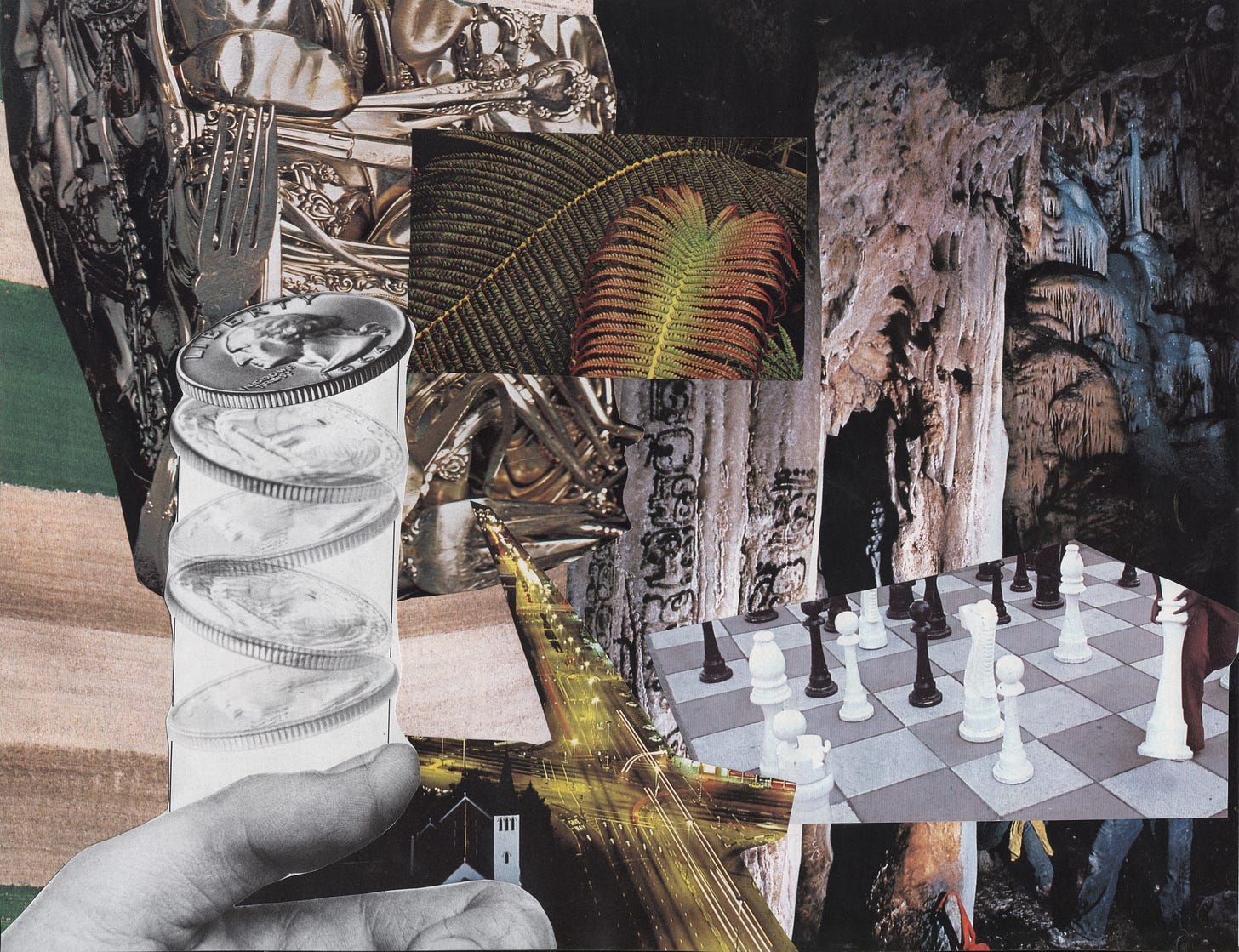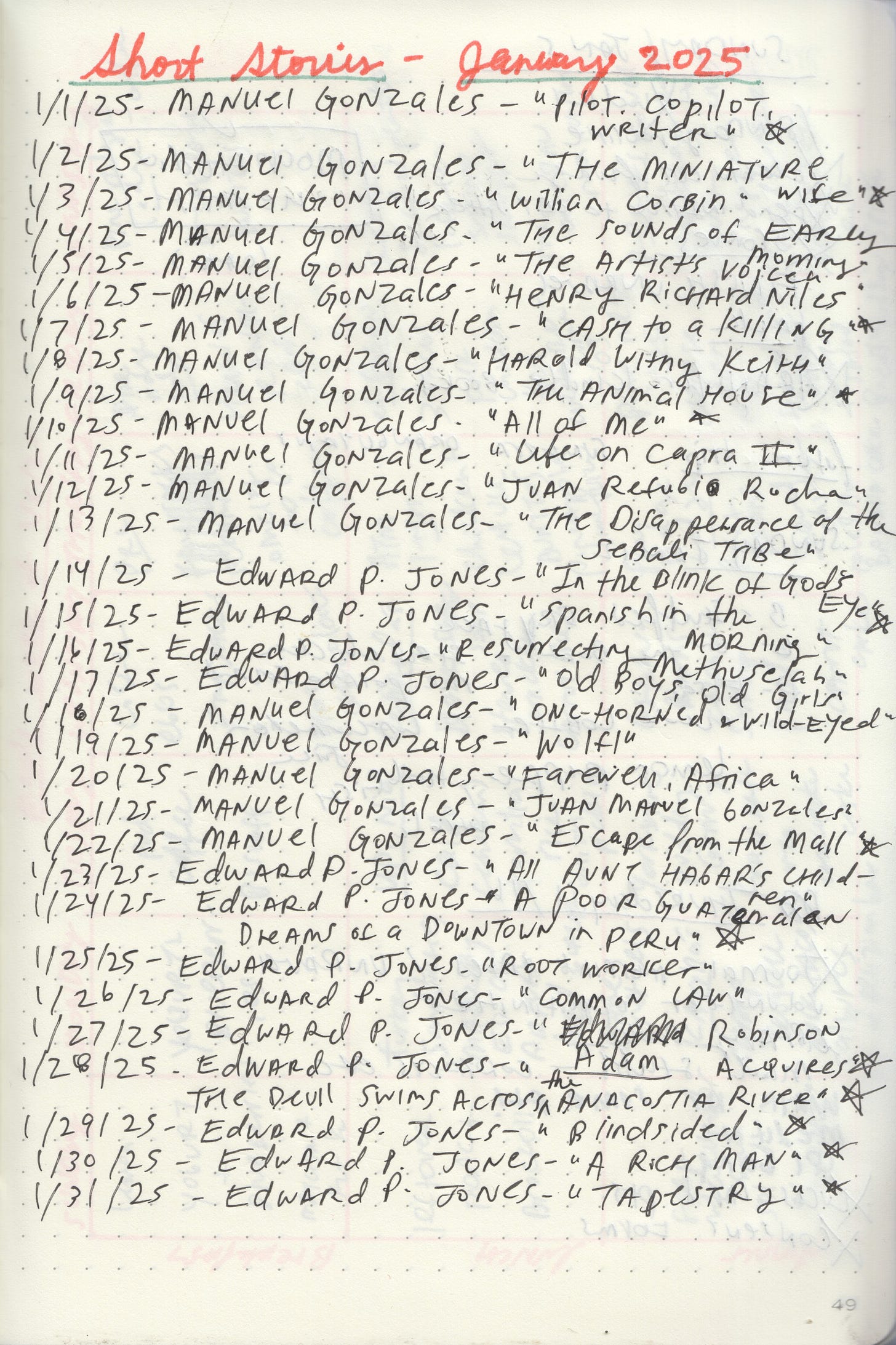"Tapestry" by Edward P. Jones
“But you and me will have to settle for somethin that will stay round for a hundred years. Maybe even a thousand. You think you gon like that? You think you gon like that many years?”
All January it was impossible not to wonder what might have happened instead of what did. If the fires in Los Angeles—where I live—might have been contained more quickly, if the winds hadn’t been so strong to begin with. If another president had been elected, or if certain events had gone differently in this president’s life, and given him a more compassionate perspective. There were personal possibilities I won’t get into here: mild regrets over paths not taken—paths that might have given me an easier time of things in the present day.
For weeks now, I’ve been struggling to revise a story, and thinking about truth in fiction. The word “truth” isn’t technically accurate here: it’s fiction, so it isn’t true. “Authentic” is adjacent to what I mean, but that’s not right either. “Genuine” and “sincere” are overly earnest. “Lived in” makes it sound like an ancient shoe. What I mean is rightness, or maybe realness. In “Tapestry,” Edward P. Jones writes about Anne Perry, a made-up person with a real life. It’s a story that’s true in exactly the way I mean.
The story begins: “Were it not for the sleeping car porter, she might well have grown old there.” We then learn what might have happened to Anne had she not met George Carter, that sleeping car porter. (She might have married Lucas Turner, and “they would not have had less than five children.”) The possibilities go on longer and in more detail than you expect them to. Later, on a train to Washington, DC, having married George but experiencing regret, Anne pictures herself returning home, every detail of her journey back. The story somehow addresses fictionality within fiction, what possibilities might have played out aside from the one that “actually” did, in would haves and woulds—imagination extending both backward and forward. We know that Anne does grow old in DC. We know she tells her grandson—into a tape recorder—some but not all of the details. The grandson himself is made possible only by Anne’s chance encounter, which was itself made possible only by her cousin’s chance encounter. What happened happened, but could just as easily have gone some other way.
Anne makes tapestries, “that long and arduous process of creating something giant and wonderful enough to put up in a church of a palace, or even on a family’s wall to replace the wallpaper of magazine and newspaper covers.” “Anybody can crochet,” her grandmother says (what a burn). But not everyone has Anne’s patience or skill for weaving tapestry, “somethin that will stay round for a hundred years.” This feels like Jones letting us in on his writing process. Writers often make their characters photographers and painters: you can tell they’re thinly veiled writers. But Anne really makes tapestries, and so does Jones.
Anne is working on a tapestry: “a winter scene that came almost entirely from her imagination, because snow had been rare in her life.” In it, there’s a brown bunny in a trail of snow. Later she decides that a hawk must appear. There’s no particular reason—it’s just a feeling she has. In art, as in life, anything could have been another way. The project gets put aside when she marries George. Years later, she abandons it completely; she even unstitches the bunny. She completes other tapestries, but there is no returning to the bunny in the snow: “She would have by then grown into something else in Washington and had barely enough left of Mississippi in her to finish the snow scene.” When life changes the artist, the art must change too—an infinite regress of changes.
Leaving a Lunar New Year celebration, a couple days after reading “Tapestry,” I started my car. On the radio (89.3!), a social scientist named Brian Klaas was talking about his new book, Fluke, which proposes that our lives—and basically everything—are more shaped by randomness and chance than we tend to believe. In our individualistic, meritocratic culture, we presume world events have reasons behind them. We assume powerful people shape history, and that the things that come to pass were meant to be. But Klaas argues that we live in a far more entangled, interconnected world, which I happen to agree with. “We control nothing, but influence everything” is how he puts it.
A short story presents an ordered narrative where none existed before. And stories—both fictional and otherwise—are just that: stories. In their attempt to make sense, they also distort. But “Tapestry,” astonishingly, avoids that totalizing. It’s woven in a way that reminds us that everything could have been otherwise.
At some point, this time we’re living through will be narrativized. Things could have been another way, but here we are. That’s disappointing of course—things could have been otherwise!—but “Tapestry” reminds me of possibility and patience, and my own limitless imagination. It didn’t have to be this way, but it is. What else could be?
Read “Tapestry” in All Aunt Hagar’s Children by Edward P. Jones (2006). (A PDF of the story was sent to subscribers. If you don’t want to miss future stories, be sure to subscribe!)
This month I read stories from The Miniature Wife & Other Stories by Manuel Gonzales (2013) and All Aunt Hagar’s Children by Edward P. Jones (2006)
Tell us what stories you read this month! Any thoughts on “Tapestry”? I’ll select one commenter to snail-mail a short story to.
In need of story recommendations? I’ve compiled a list here.






Stories I read last month:
1. “A Jury of her peers” by Susan Glaspell: Probably one of the first whydunnit stories? Loved this one a lot.
2. “The Heart Fails Without Warning” by Hilary Mantel
3. “The Twins” by Muriel Spark: I read this one every day for a week, and every day I changed my interpretation. It was like solving a Rubik’s cube that was fighting back.
4. “Sarah Cole: A Type of Love Story” by Russell Banks: I found the way the narrator kept changing between first-person and third-person narration very interesting.
5. Claire Keegan’s “Foster” and “So Late in the Day”: Loved both.
6. “Nothing Ruins a Good Story Like an Eyewitness” by Matt Cashion
7. “The Wall” by Meron Hadero: The ending was quite moving.
8. “Death of a Bachelor” by Arthur Schnitzler
9. “Everyday Use” by Alice Walker: The way she used the names was cool.
10. “Interpreter of Maladies” by Jhumpa Lahiri
11. “Prophecy” by Kanak Kapur: POV was interesting.
12. And last but not the least, “The First Day” by Edward P. Jones: This was my first Jones story. What a coincidence that you shared one from the same author! At first, this one seemed like a simple story. But when I read it a few times, I realized what a great little story it was.
Thanks for sharing “Tapestry.” I’ll read it this month.
Rachel, thank you so much for sharing this. I find it so moving that Anne is trying to integrate snow into her tapestry when she has never seen it. Yet the circumstances that lead her to see snow are the same circumstances that means she abandons the tapestry. Still working out what it all means, but I appreciate your insights on the nature of fiction, and fiction in fiction.
Lately I have been reading Jessi Jezewska Stevens’ collection ‘Ghost Pains’. Sometimes I (we?) think of short stories as a brutal, miserly medium, but her story ‘Rumpel’ really shows how big the boundaries can be/what room for play there is in short fiction.
I’ve also been reading César Aira. I find myself constantly asking of his stories ‘at what point did this piece (which seem often to be just a person musing or physics embodied in a situation) become a story?’ which is a very happy challenge.
Thanks again for this newsletter : )